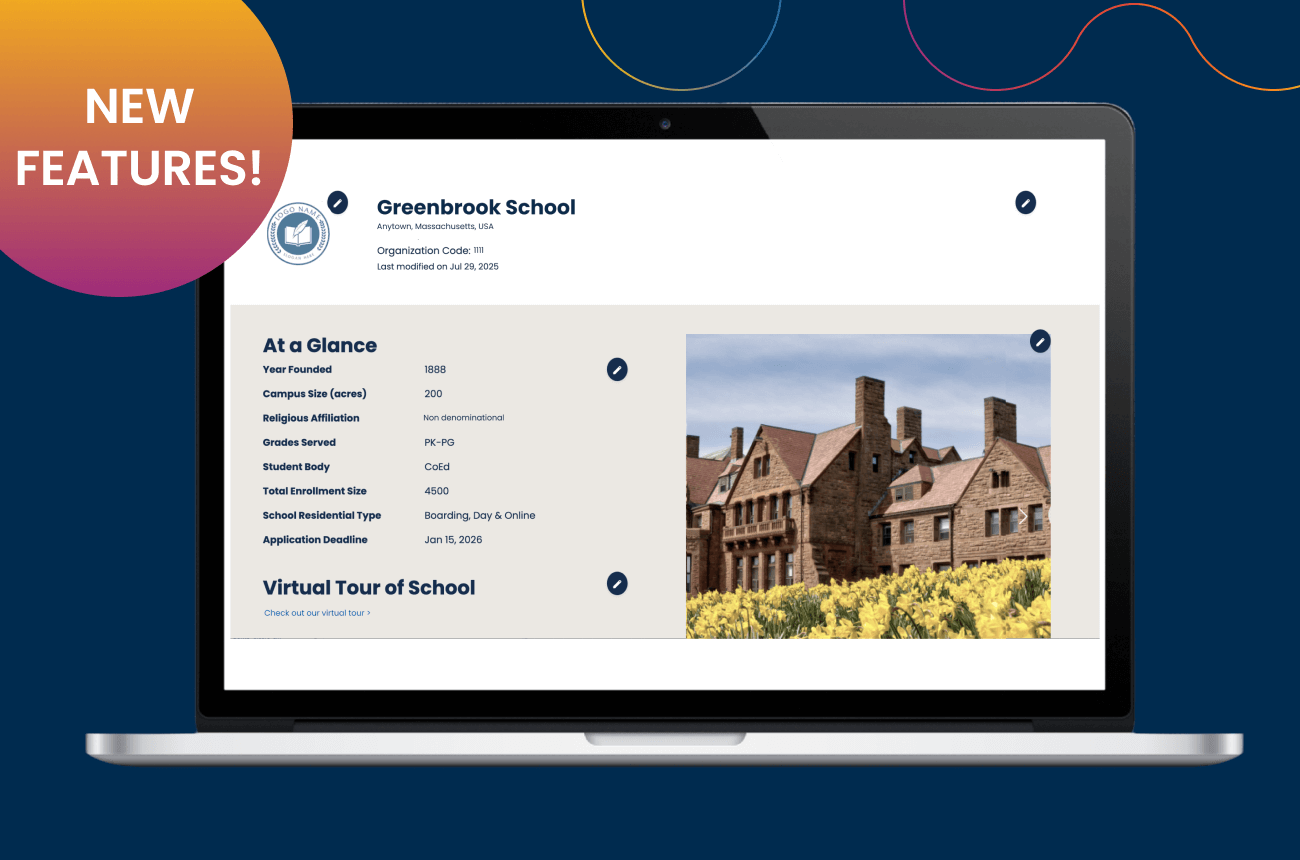7 Ways to Get the Most out of Skype

By Dan Harrop, Director of Admissions and Financial Aid, Marianapolis Preparatory School (CT)
From Memeranda, Fall 2012
We work all year to create systems and processes and to develop relationships that help enroll the “right” students. Teacher recommendations are important. Transcripts are necessary. SSAT and TOEFL scores are helpful. Add a video Skype interview for your international applicant (incorporated with additional admission data) and you have a comprehensive view to help you make this critically important decision. The video Skype interview is one of our school’s most important tools. It is cost-effective and provides maximum benefits for minimal investment of time. It enables us to use our “admission intuition” as we gauge the strengths and weaknesses of an applicant. Below are some ideas that can help you capitalize on all that video Skype can offer in the interview process.
1. Require the student to submit an application before your Skype interview. You may be the first foreigner to whom the student has spoken English and nerves are often the first major obstacle for your applicant to overcome. By reading their application, you can put them at ease by talking about topics that are familiar and interesting to them. The goal is to make them as comfortable as possible so their true personalities can shine.
2. Arrange your background specifically for your constituent. Utilize the space behind your computer (or camera) to send the message you want to convey. Your college degree, pictures or books from the applicant’s country, flowers, or a nice painting are all visual stimuli that may elicit a comment from your applicant. I often reference my surroundings and start a conversation based on something within arm’s reach, such as a Korean box, a tea set from China, or a Vietnamese doll.
3. Record your Skype video. Having a video recording of your applicant is very helpful for a number of reasons. When the admission committee is deciding between two worthy candidates, you can go back and watch and listen to the interview. Recording also helps ensure that the candidate who is applying is actually the one who shows up on campus. A recording can also be helpful to your ESL department if there is a question about placement. Microsoft users can download a software package called “Pamela for Skype,” and Mac users can use a software product called “Call Recorder.” I have used both with success. Once the software is downloaded to your computer, the recording feature is easy to use and the recordings can be cataloged and stored. I always get permission to record the video call verbally and in writing (using the Instant Message box).
4. Capture a writing sample in real time. The Instant Message (IM) feature available in Skype is a highly effective tool. When I engage an applicant, one of the first things I have them do is locate and use the IM feature. I ask all students to type their names in this box so I can confirm their identity and get permission to record the call. Towards the end of the interview, I ask for a writing sample. We use very specific questions that we phrase and rephrase from easiest to most difficult. For example, a difficult question might be “Would you prefer a homemade gift or one that was bought?” The same question in the easiest format could be “Would you prefer a gift that was made for you or a gift that was purchased?” There are two additional iterations of the same question that fall in between. I ask a series of these types of questions, print their responses, and add them to the file. The IM feature provides a time stamp with each response so you can see how long it took them to write each answer.
5. Capture a reading sample in real time. Ask your ESL department for a few paragraphs of English material in varying degrees of difficulty. You can cut and paste these paragraphs into your IM box. Ask the student to read the passage and follow up with a dialogue on what the student just read. Another option is to ask the student to read from a book or magazine in English that is in their home or apartment. You can watch and listen to them read the passage and have a conversation on the material to better understand their reading comprehension.
6. Work around the technology curveballs. Turn a static and spotty video call into an opportunity. Use the IM feature to ask the applicant to hang up and Skype again. Another option is to abort the Skype call in its entirety and have a phone conversation over a landline. Or you can speak over your desk phone while keeping Skype open so you can still capture a writing sample. Of course, you can always reschedule the Skype interview. It is very telling to note how your applicant handles this sort of adversity.
7. Make the interview a fun experience. Invite the parents in on the call, grab your computer and take a tour of your office or campus, introduce other students or office staff. The goal is to get the prospective applicant to want to join your community. A fun and informative interview is a sure winner.
Dan Harrop recorded a webinar entitled “The Skype Interview: Better than the Real Thing?” for The Enrollment Management Association’s admission webinar series.




